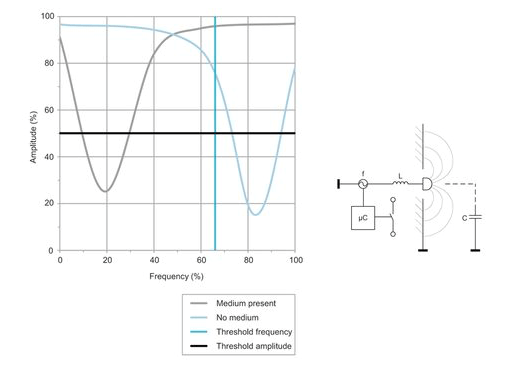Sourcing flexible sensors for varying automation demands
Sensing of liquids in tanks and pipes brings its own set of challenges. Some liquids foam up, while others, with lower viscosity, have a tendency to cling to surfaces. This can cause issues in sensing quality. The CleverLevel LBFH series from Baumer are compact level switches that integrate a bright LED, visible around 360°, to indicate the sensor status. Available in an IP69K housing, they are suitable for food and beverage, pharmaceutical and chemical applications. Based upon a capacitive resonant circuit measurement technique, they make use of frequency changes that occur in the presence of the material being detected.
The sensors can also be configured to have different switching windows, distinguishing between oil, water, foam and liquids. They are also capable of protecting from empty pipes and tanks, detecting pasty media and solid-bulk materials such as flour or plastic granulate. For the most demanding foaming or adhering materials, Baumer also provide their FlexProgrammer 9701. This programming tool can be linked to a PC via its USB interface. In collaboration with the user-friendly software, various help menus help to configure the sensor to meet the application’s demands. Measured data can also be visualised, enabling further parameter adjustment, such as time constants on damping functions and inverting the switching output logic.

| Figure 4: The LBFH series of level sensors from Baumer work on the principle of a resonant capacitive circuit. |
The sensors can also be configured to have different switching windows, distinguishing between oil, water, foam and liquids. They are also capable of protecting from empty pipes and tanks, detecting pasty media and solid-bulk materials such as flour or plastic granulate. For the most demanding foaming or adhering materials, Baumer also provide their FlexProgrammer 9701. This programming tool can be linked to a PC via its USB interface. In collaboration with the user-friendly software, various help menus help to configure the sensor to meet the application’s demands. Measured data can also be visualised, enabling further parameter adjustment, such as time constants on damping functions and inverting the switching output logic.
Read full article
Hide full article



Discussion (0 comments)